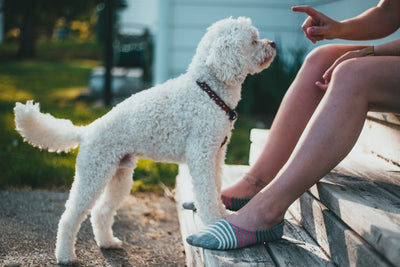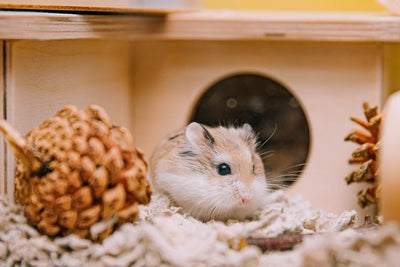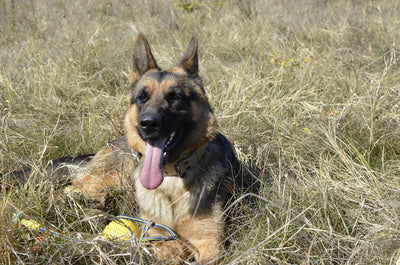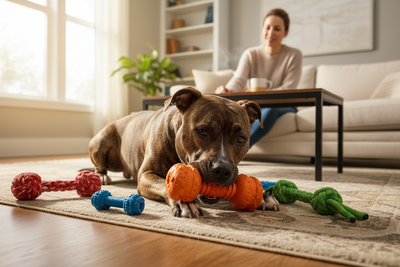
Discover the key to maintaining optimal conditions for your scaly companion with these expert heating suggestions. Whether you're a seasoned reptile enthusiast or new to caring for cold-blooded pets, ensuring the right heating setup is vital for your snake's well-being. By implementing the correct heating techniques, you can create a comfortable and stimulating environment that mirrors their natural habitat. This comprehensive guide will cover the essential aspects of providing adequate warmth for your pet snake, including temperature regulation, suitable heat sources, and creating a diverse thermal gradient within their habitat. By adhering to these proven methods, you can establish an ideal living space that promotes your snake's health and happiness. Join us as we delve into the world of reptile care and discover the secrets to keeping your scaly friend content and thriving!.
Understanding King Snake Heating Needs
Natural Habitat and Temperature Requirements
King snakes are fascinating reptiles that hail from various habitats, including grasslands, forests, and deserts. Their natural environment plays a crucial role in shaping their heating needs. Mimicking these conditions in captivity is essential for their well-being. When it comes to temperature requirements, different species of king snakes have specific preferences. Typically, they thrive in an environment that offers a temperature range of 75-85°F on the cooler side and 85-90°F on the warmer side of their enclosure. Creating a suitable temperature gradient within their habitat allows these snakes to thermoregulate effectively, ensuring they stay healthy and active.
The Impact of Incorrect Heating on King Snakes
Proper heating is paramount for the health of king snakes. Incorrect temperature levels can have severe consequences on these reptiles. If the enclosure's temperature is too low, king snakes may exhibit signs of inactivity, struggle with digesting their food, or even develop respiratory complications. Conversely, if the temperature is too high, it can induce heat stress, leading to dehydration and other health issues. Ensuring that the heating conditions are just right is not just a matter of comfort but a critical factor in safeguarding the overall well-being and longevity of king snakes.
Expanding on the heating needs of king snakes, it's worth noting that providing a thermal gradient within the enclosure is vital for their physiological processes. This gradient allows them to move between warmer and cooler areas based on their requirements, supporting their digestion, metabolism, and overall activity levels. Additionally, incorporating suitable heating elements like heat mats or heat lamps, alongside thermostats to regulate temperatures, can aid in maintaining the ideal thermal environment for these reptiles.
Importance of Humidity Levels
Apart from temperature, humidity levels are equally crucial for the well-being of king snakes. While they are generally more tolerant of lower humidity compared to other snake species, maintaining a humidity level of about 40-60% is recommended. Inadequate humidity can lead to issues with shedding, respiratory problems, and overall stress for the snakes. Providing a humidity hide or a separate humid area within the enclosure can help create microclimates that cater to their humidity needs.
Behavioral Responses to Heating
Observing the behavior of king snakes in response to temperature variations is key to understanding their heating requirements. When provided with an optimal thermal gradient, these snakes will exhibit regular patterns of basking, exploring, and thermoregulating. Changes in behavior, such as prolonged stays in cooler or warmer areas, could indicate discomfort or health issues. Monitoring their behavior and adjusting heating elements accordingly can help maintain their well-being.
Ensuring the proper heating, along with humidity regulation, is essential for the health and vitality of king snakes. By creating a habitat that mirrors their natural environment, maintaining suitable temperature gradients, and monitoring their behavior closely, snake enthusiasts can contribute to the overall well-being and longevity of these captivating reptiles.
Heating Equipment Options
When it comes to providing the right heating equipment for your king snake, there are several options to consider. Selecting the appropriate heating equipment is crucial to ensure the well-being and comfort of your reptile friend. Let's explore the different types of heating equipment available and the factors to consider when choosing the best option.
Types of Heating Equipment Suitable for King Snakes
-
Heat Mats: Heat mats are a popular choice for providing localized warmth to specific areas within the snake's enclosure. They are ideal for creating a warm basking spot or a cozy retreat for your king snake.
-
Ceramic Heat Emitters: Ceramic heat emitters produce heat without emitting light, making them suitable for providing warmth during the night without disturbing your snake's natural light cycle.
-
Heat Lamps: Heat lamps are another common heating option that can be used to create a gradient of temperatures within the enclosure. They are suitable for simulating the sun's warmth and providing the necessary heat for thermoregulation.
-
Under Tank Heaters: Under tank heaters are placed beneath the enclosure to provide a gentle heat source from below. They can help maintain overall ambient temperatures within the habitat.
Factors to Consider When Choosing Heating Equipment
-
Size of the Enclosure: Consider the size of your king snake's enclosure when selecting heating equipment. Ensure that the chosen heating source can effectively warm the entire space while allowing for temperature gradients.
-
Temperature Requirements: Different species of king snakes have specific temperature requirements. It's essential to research and understand the temperature needs of your snake to provide the appropriate heating equipment.
-
Safety Features: Prioritize heating equipment with safety features such as thermostats and temperature controls to prevent overheating and ensure a stable thermal environment for your king snake.
-
Energy Efficiency: Opt for energy-efficient heating equipment that can maintain the desired temperatures in a cost-effective manner. Consider the long-term energy consumption and operating costs when choosing the right heating source for your snake.
-
Backup Heating Source: It's advisable to have a backup heating source in case of primary equipment failure. This ensures that your king snake's habitat remains adequately heated even in unforeseen circumstances.
-
Consultation with a Reptile Veterinarian: If you are unsure about the best heating equipment for your king snake, seek advice from a reptile veterinarian. They can provide guidance tailored to your snake's specific needs and habitat requirements.
By carefully considering the types of heating equipment suitable for king snakes and the essential factors to take into account, you can create a comfortable and healthy environment for your beloved reptile companion.
Setting Up the Heating System
Creating a Proper Heating Gradient in the Enclosure.
When setting up the heating system for your enclosure, it is crucial to create a proper heating gradient. This gradient allows your reptile to move between different temperature zones according to their needs. The gradient should typically range from a warmer basking spot to a cooler area for regulation of body temperature.
Placement of Heating Equipment for Optimal Warmth Distribution.
The placement of heating equipment plays a key role in ensuring optimal warmth distribution. Heat sources such as heat lamps or heating pads should be positioned in a way that they provide the necessary warmth throughout the enclosure. Ensure that there are no direct contact points between the heating equipment and your reptile to prevent accidental burns.
Additional Tips for Setting Up the Heating System:.
-
Use a Thermostat: It is essential to use a thermostat with your heating equipment to regulate and maintain the desired temperature. This helps prevent overheating and ensures a consistent temperature within the enclosure.
-
Consider Ceramic Heat Emitters: Ceramic heat emitters are a great option for providing heat without emitting light, making them ideal for use during the night to maintain a stable temperature without disrupting your reptile's day-night cycle.
-
Monitor Temperature Regularly: Invest in quality thermometers to monitor the temperature levels in different areas of the enclosure. This allows you to make adjustments as needed to maintain the proper heating gradient.
-
Provide Hiding Spots: In addition to the heating equipment, make sure to include hiding spots in the enclosure. These areas allow your reptile to retreat to a cooler or warmer spot based on their comfort needs.
Creating a Suitable Microclimate.
Apart from the general heating setup, creating a suitable microclimate within the enclosure is essential for your reptile's overall well-being. Factors to consider include humidity levels, which can be regulated using misting systems or water bowls strategically placed within the habitat. Proper ventilation is also crucial to prevent the buildup of excess humidity, which can lead to respiratory issues.
Introducing a Gradient of Light and Dark.
In addition to temperature gradients, providing a gradient of light and dark periods within the enclosure mimics the natural day-night cycle experienced by reptiles in the wild. This helps regulate their biological rhythms and ensures they receive adequate rest.
Incorporating Natural Elements.
Enhance your reptile's habitat by incorporating natural elements such as rocks, branches, and plants. These not only provide enrichment and opportunities for climbing and exploration but also contribute to creating a more naturalistic environment.
Regular Maintenance and Observation.
Lastly, ensure regular maintenance of the heating system by checking equipment for wear and tear, replacing bulbs or heating elements as needed, and cleaning the enclosure to prevent the buildup of bacteria or mold. Additionally, observe your reptile's behavior to ensure they are comfortable and thriving in their environment.
By following these comprehensive guidelines and dedicating time to create an ideal heating system and habitat for your reptile, you can promote their health and well-being while offering a space that closely resembles their natural surroundings.
Monitoring and Maintaining Heating
Regular Temperature Checks and Adjustments
- The Significance of Regular Temperature Checks
- Proper Techniques for Adjusting the Thermostat
- Recommended Temperature Settings for Optimal Comfort
- Benefits of Consistent Monitoring of Heating Systems
Common Heating Issues and Troubleshooting Tips
- Identifying Common Heating Problems Early
- DIY Troubleshooting Steps for Minor Heating Issues
- Importance of Regular Filter Changes
- Conducting Annual HVAC Inspections for Efficiency
- When to Seek Professional Help for Heating System Maintenance
Ensuring the efficiency and reliability of your heating system is crucial for maintaining a comfortable living environment. Regular temperature checks and adjustments play a vital role in achieving optimal performance from your heating system. By understanding the importance of monitoring and maintaining your heating system, you can prevent potential issues and extend its lifespan.
Regular temperature checks help in identifying any fluctuations or irregularities in your heating system. By making small adjustments to the thermostat, you can ensure that your home remains at a comfortable temperature throughout the day. It is advisable to set different temperature settings for various times of the day to maximize energy savings without compromising on comfort.
Common heating issues such as uneven heating, strange noises, or a sudden increase in energy bills can indicate underlying problems with your system. By familiarizing yourself with these signs and following DIY troubleshooting steps, you can address minor issues promptly. Additionally, regularly changing your air filters and scheduling annual HVAC inspections are essential maintenance practices that can improve efficiency and prevent costly repairs.
However, some heating issues may require professional intervention. If you encounter complex problems or if your heating system is not functioning optimally, it is advisable to seek assistance from qualified technicians. Professional maintenance services can help in identifying hidden issues, ensuring safety, and prolonging the lifespan of your heating system.
By prioritizing monitoring and maintaining your heating system, you can enjoy consistent comfort, lower energy costs, and a longer-lasting HVAC system. Stay proactive in addressing heating issues, and remember that a well-maintained system is key to a cozy and efficient home environment.
Conclusion
Proper heating is essential for the health and well-being of King Snakes. By ensuring a temperature gradient within their enclosure, using appropriate heating elements, and monitoring temperatures regularly, snake owners can create a comfortable and safe environment for their pets. Remember, maintaining the right temperature is key to keeping your King Snake healthy and thriving.






